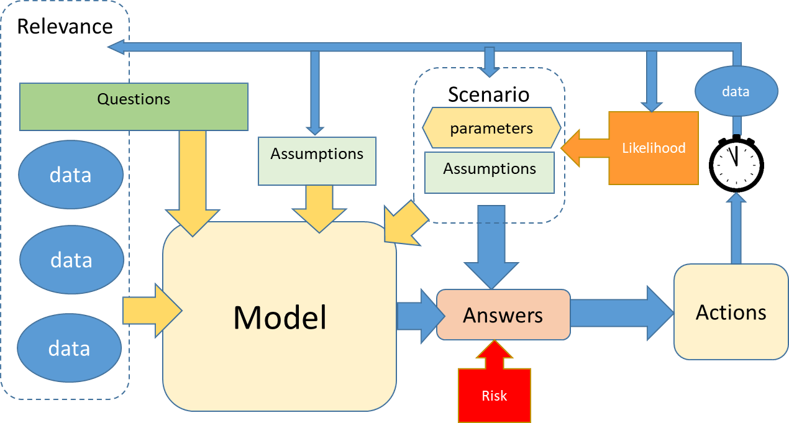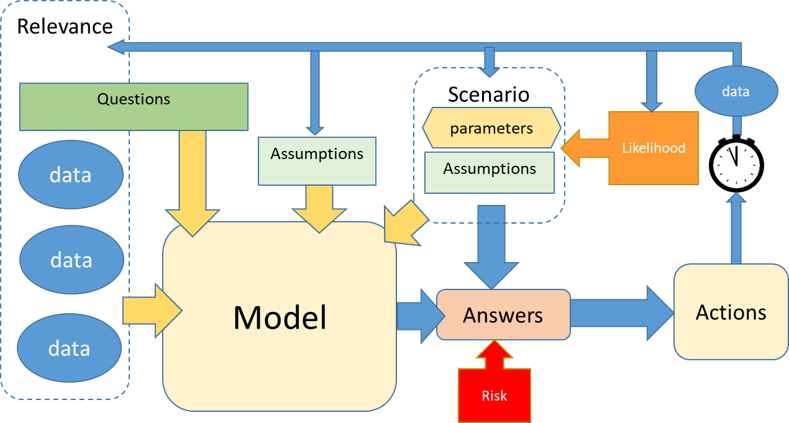Models, assumptions, risks and consequences.
Blog: The Knowledge Economy

Expressing real life situations as mathematical models drive decisions on how to respond appropriately.
Assumptions are not facts but do have a probability of occurring. Confidence in a model is an important factor of both the likelihood of the assumptions being correct and the quality and quantity of the data used. Data sample sizes that are too small lead to low statistical significance and high probability of misleading conclusions.
It is unlikely that all influences will be either identified or utilised with some valid assumptions being overlooked.
Decisions and actions based on a model’s output will always be subject to risk. Assess risk by exploring its likelihood and the impact of its realisation. Mitigation of identified risk is essential.
During the Covid-19 pandemic countries are developing various models to inform their responses.
Actions are decided upon using models to address issues that have been identified. Each action has consequences for which observations and the new data obtained should be used to refine the base model. Assumptions should be reassessed and the model revalidated.
An example of a consequence :
- In order to ensure that essential workers are able to continue to work it was decided that no parent should be required to pay the gap in child care. The way in which this was enabled has the consequence of reducing the income of many child care operators to the point where they no could no longer offer a service. With no childcare available there are recorded instances of essential workers who could no longer work. It would appear that insufficient ‘what if’ questions were asked with the consequence invalidating the model used to drive the decision.
Relaxation of social distancing rules are being mooted. Models, presumably using assumptions around transmission and recovery rates, have been referenced that suggest that such action is warranted. A decision to do so must assess its associated risks and the probability of their realisation.
In Australia only 0.026% of the population has officially contracted Covid-19 leaving 99.074% of the population vulnerable. It has been noted that the spread of the disease is likely to be far wider than the official figures suggest. Models used to support any response decisions need to factor in the consequences of being wrong.
The post Models, assumptions, risks and consequences. appeared first on The Knowledge Economy.
Leave a Comment
You must be logged in to post a comment.








